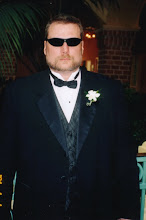
The League of Ridiculous Villains, Part Four
Our not-exactly lovable loser from the Silver Age of Marvel Comics this time is The Voice of Doom, who pitted himself against Ant-Man back in Tales to Astonish # 42, April 1963. After a non-descript radio announcer was exposed to ionized atoms from a nearby laboratory, he gained the power to make anyone who heard his voice believe what he said and obey his commands. Seeking a way to make money off this good fortune, the guy decides to take on Ant-Man, based on this monumentally-flawed logic…“If I can defeat Ant-Man, I can defeat anyone.”
Say what now? Sure, there weren’t a ton of super-heroes around the Marvel Universe back in ’63, but in a world where Thor, Iron Man, Spider-Man and the Fantastic Four are for the most part already well-known, the best this guy could do was Ant-Man? They divide boxing matches up by weight class for a reason, and it isn’t because the little guys beat up the big guys. This googan figures after Ant-Man, the others will be a cakewalk? Maybe the ionized atoms made him delusional, too. To top off his ridiculousness, the guy was defeated by Ant-Man-induced laryngitis for crying out loud!
Our not-exactly lovable loser from the Silver Age of Marvel Comics this time is The Voice of Doom, who pitted himself against Ant-Man back in Tales to Astonish # 42, April 1963. After a non-descript radio announcer was exposed to ionized atoms from a nearby laboratory, he gained the power to make anyone who heard his voice believe what he said and obey his commands. Seeking a way to make money off this good fortune, the guy decides to take on Ant-Man, based on this monumentally-flawed logic…“If I can defeat Ant-Man, I can defeat anyone.”
Say what now? Sure, there weren’t a ton of super-heroes around the Marvel Universe back in ’63, but in a world where Thor, Iron Man, Spider-Man and the Fantastic Four are for the most part already well-known, the best this guy could do was Ant-Man? They divide boxing matches up by weight class for a reason, and it isn’t because the little guys beat up the big guys. This googan figures after Ant-Man, the others will be a cakewalk? Maybe the ionized atoms made him delusional, too. To top off his ridiculousness, the guy was defeated by Ant-Man-induced laryngitis for crying out loud!
As an aside, “the Voice of Doom” was a nickname listeners had for Lorne Greene, who was the principal newsreader for the Canadian Broadcasting Corporation National News in the 1930’s and ‘40’s. (Someone at Marvel was obviously hip to that little tidbit at some point, because when it came time to assign the Voice a real name, it was chosen to be Jason Lorne Cragg.)
Part Four’s DC villain is the Bug-Eyed Bandit, who was first brave enough to call himself that in public in The Atom #26, Aug-Sept 1966. If the villain name alone isn’t enough to earn him a spot on the League, the guy’s secret identity was Bertram Larvan. Larvan…Larva, get it? And check out that costume! Yeesh! Amazingly, this guy was one of the Atom’s main villains during the Silver Age. The story may be apocryphal, but word is that Marv Wolfman killed off the Bug-Eyed Bandit in the landmark Crisis on Infinite Earths maxi-series because he did not want to work for a company that would print stories involving such asinine characters.
Part Four’s DC villain is the Bug-Eyed Bandit, who was first brave enough to call himself that in public in The Atom #26, Aug-Sept 1966. If the villain name alone isn’t enough to earn him a spot on the League, the guy’s secret identity was Bertram Larvan. Larvan…Larva, get it? And check out that costume! Yeesh! Amazingly, this guy was one of the Atom’s main villains during the Silver Age. The story may be apocryphal, but word is that Marv Wolfman killed off the Bug-Eyed Bandit in the landmark Crisis on Infinite Earths maxi-series because he did not want to work for a company that would print stories involving such asinine characters.
The Voice of Doom and the Bug-Eyed Bandit are both proof that while shrinking heroes are visually interesting and no doubt provide artists and writers lots of fun in concocting their various travails, by and large these little guys are only able to handle losers from the absolute bottom of the super villain barrel.











